Surgeons periodically encounter such a problem among their patients as groin pain. Timely and correct diagnosis of the causes of their occurrence is the key to successful treatment. Research shows that in more than 20% of cases, the cause of groin pain is a defect in the aponeurosis of the external oblique abdominal muscles. Moreover, such a defect can be either congenital or acquired. It should be noted that most of the pain in this area with similar symptoms is caused by muscle damage with the development of myofascial syndrome, which requires careful differential diagnosis and other therapeutic approaches.
However, among patients with groin pain there are also patients with an acquired defect of the aponeurosis of the cervical inguinal tract as a result of a previous appendectomy or surgery for ectopic pregnancy.
Diagnosis and treatment
The following types of defects are distinguished:
Linear defect
- inclusion of terminal branches n into the defect area. iliohypogastricus
- “muscle hernia” - fibers of the internal oblique abdominal muscle protruding into the area of the defect
- an anomaly in the development of the inguinal falx, when there are almost no tendon fibers in this area.
Typical complaints in patients with aponeurosis defects are groin pain that worsens after sudden movements, such as hitting a ball, turning in bed, coughing or sneezing, during sex, and when climbing stairs. The difficulty of diagnosis lies in the ambiguous interpretation of ultrasound examinations when studying pathology in this area. Thus, the diagnosis is established as a result of the participation of specialists from different fields - a surgeon, gynecologist, urologist, and radiology specialist.
And this is precisely the reason for all the unsuccessful attempts at conservative treatment of this kind of groin pain by specialists who do not have the necessary qualifications and experience in the surgical treatment of aponeurosis defects. However, these specialists can and should suspect a similar problem in the absence of evidence of symptoms of a gynecological or urological disease, or in the event of long-term unsuccessful treatment for it.
According to our results of surgical treatment of the aponeurosis defect of the LMBI in 54 patients, all patients noted complete (52 people or 96.3%) or almost complete (2 people or 3.7%) disappearance of pain and restoration of motor functions that were impaired due to pain syndrome. In most cases, after surgery, no special rehabilitation methods were required, except for exercise therapy. In 3 patients with pain duration over 3 years, myofascial release of secondary affected muscles was required. The athletes began training 2 weeks after the operation, and after another 2-2.5 weeks they trained at full strength.
Close interaction between gynecologists, urologists, surgeons and a specialist in the treatment of groin pain and early diagnosis of the causes of their occurrence is the key to successful treatment and early rehabilitation with the restoration of all motor functions. And the most important thing is to relieve the patient from constant pain.
Aponeurosis
Aponeuroses of the anterior abdominal wall (indicated in blue) and linea alba
Aponeurosis(ancient Greek ἀπο- - prefix with the meaning of removal or separation, completion, reversal or return, negation, termination, transformation + νεῦρον "vein, tendon, nerve") - a wide tendon plate formed from dense collagen and elastic fibers. The aponeuroses have a shiny, white-silver appearance. In terms of histological structure, aponeuroses are similar to tendons, but are practically devoid of blood vessels and nerve endings. From a clinical point of view, the most significant are the aponeuroses of the anterior abdominal wall, the posterior lumbar region and the palmar aponeuroses.
Aponeuroses of the anterior abdominal wall
The aponeuroses of the muscles of the anterior abdominal wall form the sheath of the rectus abdominis muscle. The vagina has an anterior and posterior plate, while the posterior wall of the vagina at the level of the lower third of the rectus muscle is absent, and the rectus abdominis muscles with their posterior surface are in contact with the transverse fascia.
In the upper two-thirds of the rectus muscle, the anterior wall of the vagina is formed by the bundles of the aponeurosis of the external oblique muscle and the anterior plate of the aponeurosis of the internal oblique muscle; the posterior wall is the posterior plate of the aponeurosis of the internal oblique muscle and the aponeurosis of the transverse abdominal muscle. In the lower third of the rectus muscle, the aponeuroses of all three muscles pass to the anterior wall of the vagina.
Aponeuroses of the posterior lumbar region
The aponeuroses of the posterior lumbar region cover the longitudinal muscles of the lower back: the muscle that straightens the trunk (lat. m. erector spinae) and multifidus muscle (lat. m. multifidus)
Palmar aponeuroses
The palmar aponeuroses cover the muscles of the palmar surface of the hands.
Aponeurosis of the skull
Supracranial aponeurosis, or tendon helmet (lat. galea aponeurotica) - aponeurosis located between the skin and periosteum and covering the cranial vault; is an integral part of the occipitofrontal muscle, combining its occipital and frontal belly.
see also
Links
- // Encyclopedic Dictionary of Brockhaus and Efron: In 86 volumes (82 volumes and 4 additional ones). - St. Petersburg. , 1890-1907.
Wikimedia Foundation. 2010.
Synonyms:See what “Aponeurosis” is in other dictionaries:
Aponeurosis... Spelling dictionary-reference book
- (from the Greek apo from, and neuron nerve, muscle). Connective membranes that attach muscles to bones. Dictionary of foreign words included in the Russian language. Chudinov A.N., 1910. APONEUROSIS, a membrane of tendons that attaches muscles to bones.… … Dictionary of foreign words of the Russian language
A connective tissue plate with which muscles are fixed. In humans, aponeurosis is also called the fascia of the sole and palm penetrated by tendon threads... Big Encyclopedic Dictionary
- (from apo... and Greek neuron), a wide tendon plate of vertebrates, consisting of dense collagen and elastic fibers, through which certain broad muscles are attached to bones or other tissues of the body. A. called also fascia,... ... Biological encyclopedic dictionary encyclopedic Dictionary
APONEUROSIS- (aponeurosis) a thin but fairly strong petal of densely formed fibrous connective tissue that replaces flat leaf-like tendons in muscles that are attached to bones over a considerable distance (for example, the aponeurosis of the external... ... Explanatory dictionary of medicine
- (aponeurosis, PNA, BNA, JNA; Greek aponeurosis; ano + neuron vein, tendon, nerve; synonymous tendon stretch) 1) a wide connective tissue plate consisting of dense collagen and elastic fibers, which are located more ... ... Large medical dictionary
The aponeurosis of the external abdominal muscle is represented by wide collagenous compounds that provide the muscles with support and fixation on the bony skeleton.
Pathologies of this structure manifest themselves in the form of divergence of fibers, which entails pain and perforation of organs into the hernial rings.
Anatomical features
The aponeurotic system has a denser integral structure, and is practically devoid of blood vessels, compared to muscle fibers.
Due to its histological similarity to tendons, it helps the body perform lateral tilts of the body.
The aponeurosis of the internal oblique muscle of the abdomen fixes muscle fibers from the costal arch to the pubis.
The aponeurosis of the external abdominal muscle connects a wide layer of muscles between the midline, the iliac crest and the pubic bone in the direction of the external inguinal ring.
In this case, both structures are woven into the body of the white line, thereby supporting the abs.
Diseases
The most common defect of aponeurotic tissue is stretching and separation up to rupture.
The most common cause of the disease is sports injuries caused by overexertion during training, or congenital degenerative changes.
At the same time, it is very difficult to establish a diagnosis due to the extensive symptomatic picture:
- The pain is localized in the groin area;
- Increased pain when sneezing, sudden movement or turning of the body;
- Difficulty with regular digestion;
- Posture deteriorates;
- An inguinal hernia forms. In this case, vital organs enter the hernial ring, which requires prompt surgical treatment.
Also, the aponeurosis of the internal oblique abdominal muscle can provoke a decrease in respiratory function, causing oxygen starvation and deterioration of tissue trophism.
Differential diagnosis requires excluding pathologies of nearby organs. This requires examination by specialized specialists:
- Urologist;
- Andrologist or gynecologist;
- Gastroenterologist;
- Orthopedist.
The final diagnosis is established based on medical history, examination and ultrasound.
The only method of eliminating the defect is surgery. In this case, early detection of the disease and timely surgical treatment are of great importance.
Operation technique
The procedure involves suturing the dislocated areas while maintaining mobility. At the same time, it is important to avoid the formation of transverse duplication, which can lead to dangerous postoperative complications in the form of repeated ruptures.
Operative access is created in the area of pain.
The surgeon repairs the dissection by placing sutures in a staggered pattern at a distance of 0.5 to 2 cm to avoid tension on the tendons.
Compliance with the intervention technique allows you to eliminate pain and limitations in mobility. Patients begin exercise therapy within two weeks.
Description: Aponeurosis: what is it, what does such an anomaly lead to? It is a tendon plate that can be located in different parts of the body. Its anomaly causes various complications that significantly complicate a person’s life. They are rarely cured with conservative therapy; surgery is often necessary.
When they talk about aponeurosis, they mean a tendon plate that has considerable dimensions and consists of dense elastin and collagen fibers. Regardless of their type, all aponeuroses have a silvery-white tint. If we talk about their structure, then it is in many ways similar in structure to tendons, but there are almost no nerves or vessels in them. There are a certain number of such zones in the human body, but only a few of them are considered particularly significant.
Palmar aponeurosis – these are cords covering the surface of the palm of the human hand. When a patient is diagnosed with a pathology such as Dupuytren's contracture, this often indicates an abnormality of the tendon plate. A person with this problem experiences cicatricial contraction of the aponeurosis, which occurs as a result of the formation of nodes and cords on it. This is why contracture occurs, due to which a finger (or several) is constantly in a bent position.
As a rule, palmar aponeurosis is found in men, but the cause of its occurrence still remains unknown. Most experts are of the opinion that the pathology is provoked by hand injuries, but in this case, by the age of forty, everyone would have such a contracture. The disease progresses slowly, affecting both hands over time. The only effective treatment – an operation involving excision of the palmar aponeurosis. If we consider other serious anomalies of the upper extremities of this type, then no less problems are caused by the pathology of the biceps brachii muscle, against the background of which the shoulder joints also lose their normal functions.
Abdominal muscle pathology
Often, surgeons, gynecologists, and urologists deal with complaints of pain in the groin area. It is worth noting: in almost 50% of complaints the cause lies in a defect in the aponeurosis of the abdominal muscles. This anomaly is congenital or acquired. Most complaints of people with this problem boil down to constant pain, which, in addition, tends to intensify after intense physical activity, as well as during coughing or sneezing. Often the aponeurosis causes particular discomfort:
- oblique abdominal muscle;
- transverse abdominis muscle.
As a rule, pathology of the external oblique muscle is especially unpleasant. It should be noted: the transformation of muscles into the aponeurosis occurs diagonally, running from the costal arch to the pubis. The muscles provide strength to the peritoneal wall and are located in front, in the groin area. The structural threads of the aponeurosis run horizontally, intertwining into the whitish line of the abdomen. In addition, they form a certain layer of the vagina. Only in 10% of cases with such a problem is it discovered that the structural threads of the aponeurosis are combined with the transverse muscle, which leads to the formation of a joint aponeurosis.
If we talk about the aponeurosis of the transverse abdominal muscle, then it is the site of the third, deepest layer of the abdominal muscles and plays an important role in the formation of an inguinal hernia. The muscles are transformed into an aponeurosis along a line that unites the costuro-ureteral angle with the inguinal ring. The transition area often varies in such a way that, as a result, one of the levels simultaneously includes muscle fibers and structural components of the aponeurosis.
However, in practice, diagnosing this defect is not easy, since doctors from different fields must take part in making the diagnosis. Some experts believe that it is more appropriate to treat the pathology with the help of conservative therapy, but in reality such therapeutic measures are ineffective and cannot be done without surgery. Only surgical treatment guarantees tissue restoration, as a result of which it can be said with a high degree of probability that the pain will disappear. Statistical data point to the fact that surgical treatment in 95% of cases leads to a complete recovery of the patient.

Aponeurosis of the external oblique muscle is the most common cause of pain in the groin area. Naturally, if a person does not have such a pathology, there will be no manifestations of it either. However, if pain is still present, you should visit a doctor so that timely treatment can be prescribed. If the symptoms are ignored from the very beginning, you should be prepared for the pain to intensify over time.
Head trauma
Traumatic brain injuries are very common in humans. However, it is often believed that if the skull is not broken or there is no concussion, then nothing serious has happened. However, during a head impact, damage to the tendon helmet is possible (this is how the aponeurosis of the head is called), as a result of which a rather large hematoma is often formed, resembling a dent on the skull.
With such an anomaly, a person feels quite a bit of pain, and the hematoma itself has a dark red color, then it turns blue, then green, and at the final stage it turns yellow. These metamorphoses are associated with the breakdown of hemoglobin accumulated in the hemorrhage area.
The supracranial aponeurosis (this is the second designation of the tendon helmet, which in its shape resembles a helmet) connects the frontal, occipital, and supracranial muscles into one whole. It is attached to the skin above the nose and eyes and is very important for facial expressions (for example, it helps raise eyebrows, wrinkle the skin of the forehead).
Foot ailments
If we consider plantar aponeurosis, it should be noted that this is a common pathology of runners or people who love long walks. Inflammation in the area of the heel and sole is associated with plantar aponeurosis. Often, the disease manifests itself in people aged 40-60 years, as well as in those who, due to professional duties, spend all day on their feet. The main sign of the problem is pain in the heel, which bothers you when you put stress on the lower limbs and at complete rest.
Doctors explain the problem as follows: normally, the aponeurosis functions as a shock absorber, supporting the arch of the foot, but with excessive load, microcracks and microtears form in this tendon plate, the healing of which takes quite a long time. It is these injuries that cause pain if the work and rest regime is not followed, as well as during professional running.
In almost all cases of such a disease, the only effective treatment is surgery (dissection, resection, removal of the pathological area). Only in some cases is it possible to use conservative treatment methods. Self-medication in such cases is not at all acceptable.
105. 1- the aponeurosis of the external oblique abdominal muscle is sutured edge to edge without tension;
2- the Thomson plate is sutured with separate vicryl sutures;
3- cosmetic skin sutures are applied.
106. 1 - release of the hernial sac ;
2 - treating his cervix .
107. 1 - plastic surgery of the inguinal canal according to Roux – T. P. Krasnobaev ;
2 - according to A. V. Martynov .
108. 1 - femoral ;
2 - inguinal .
109. 1- there is the possibility of visual control of the surgical field in order to prevent damage to the formations surrounding the femoral ring (femoral vein, obturator artery in the “crown of death”, round ligament of the uterus, etc.).
110. 1 - the hernial orifice is closed by suturing the pectineal ligament to the inguinal ligament ;
2 - sometimes the previous method of hernioplasty is combined with suturing the crescent edge of the lata fascia of the thigh to the pectineal fascia .
111. 1 - in suturing the inguinal ligament to the pectineal ligament from the side of the inguinal canal .
112. 1 - there is an increase in the height of the inguinal space (which creates the possibility of an inguinal hernia) .
113. 1 - according to Parlaveccio, they simultaneously close the deep opening of the femoral canal and the inguinal space, eliminating the possibility of future formation of a direct inguinal hernia) ;
2 - after closing the deep femoral ring, the inguinal gap is eliminated by suturing the lower edges of the internal oblique and transverse muscles to the pectineal ligament .
114. 1 - vertical skin incision along the midline. Start a few cm above the navel, go around the navel to the left and continue the incision 3-4 cm downwards ;
2 - semilunar incision bordering the hernial protrusion from below .
115. 1 - the deformed navel is excised in agreement with the patient .
116. 1 - placing a purse-string suture on the edges of the umbilical ring in the longitudinal direction under the control of a finger inserted into the umbilical ring .
117. Creating a duplication using the sheets of the white line of the abdomen
1 - a skin incision is made along the midline of the abdominal wall, bordering the hernial protrusion. They open (for the purpose of revision) and remove the hernial sac. The umbilical ring is expanded up and down to full tissue. Scarred areas of the white line are excised sparingly. After careful hemostasis, the aponeurosis (“white line”) is doubled ;
2 - the left edge of the aponeurosis is retracted to the left and the right edge is sutured to its base, the free left edge of the aponeurosis is laid on top of the right and sutured with separate sutures .
118. The principle of the operation is to create a duplicate anoneurosis in the area of the umbilical ring ;
1 - the umbilical ring is dissected with a horizontal incision. The lower edge of the aponeurosis incision is moved under the upper edge using “U”-shaped sutures. ;
2 - the free upper edge of the aponeurosis incision is placed on the lower one and fixed with a second row of sutures .
119. 1 - disruption of the blood supply to the organ with subsequent gangrene and the development of peritonitis ;
2 - in the deep opening of the inguinal canal ;
3 - in the superficial opening of the inguinal canal .
120. 1 - make a skin and subcutaneous incision that is usual for inguinal hernia operations basics ;
2 - after dissection of the aponeurosis of the external oblique muscle of the abdomen, the hernial sac is isolated ;
3 - open the hernial sac, fix the strangulated organ ;
4 - after which the pinching ring is dissected - most often the aponeurosis of the external oblique abdominal muscle. Less commonly, infringement occurs in the internal opening of the inguinal canal. The strangulated organ is covered with napkins soaked in warm saline solution and observed for 5-7 minutes. If after this time the strangulated part of the organ has not acquired signs of vital activity, it is resected. The further stages of the operation are the same as for a non-strangulated hernia. .
121. 1 - up and ;
2 - laterally .
122. 1 - in the medial direction ;
2 - lacunar ligament ;
3 - obturator artery with the “crown of death” .
123. 1 - “laparotomy” or “transection” – opening of the abdominal cavity (“relaparotomy” – repeated opening of the abdominal cavity) ;
2 - therapeutic (laparotomia vera) - surgical access to the abdominal organs for the purpose of performing an operative procedure ;
3 - diagnostic, trial (laparotomia probatoria).
124. 1 - longitudinal ;
2 - oblique ;
3 - corner ;
4 - transverse ;
5 - combined .
125. In relation to the midline and rectus abdominis muscle, the following incisions are distinguished: :
1 - median ;
2 - paramedian ;
3 - transrectal ;
4 - pararectal .
126. 1 - midline incision .
127. 1 - upper midline laparotomy ;
2 - lower midline laparotomy .
128. 1 - provide wide access to the abdominal organs (beneficial for emergency operations for acute surgical diseases of the abdomen and penetrating wounds) ;
2 - the blood vessels and nerves of the anterolateral abdominal wall are not damaged ;
3 - the incision can be expanded upward and downward ;
4 - slow scar formation ;
5 - wound dehiscence in weakened patients.
129. 1 - in order to avoid damage to the umbilical vein, located in the round ligament of the liver (the ligament is directed from top to bottom, from right to left, from back to front). If necessary, hemostatic clamps are applied to the ligament, cut between them and bandaged.
130. 1 - the medial edge of the rectus abdominis muscle is shifted to the lateral side ;
2 - the lateral edge of the rectus abdominis muscle is shifted to the medial side .
131. 1 - the rectus abdominis muscle is not damaged ;
2 - the line of incisions of the anterior and posterior walls of the aponeurotic sheath of the rectus muscle is not coincide (“stepped” access) ;
3 - there is a prerequisite for damage to the branches of the intercostal nerves located on the posterior wall of the vagina to the rectus muscle. V.I. Dobrotvorsky modified the Lennander surgical approach: the posterior wall of the rectus sheath is dissected not vertically, but obliquely - in the direction of the intercostal nerves .
132. 1 - laminated along the fibers in the longitudinal direction ;
2 - due to damage to the branches of the intercostal nerves innervating the muscle .
133. 1 - liver ;
2 - ;
3 – spleen.
134. 1 - cecum c ;
2 - vermiform appendix ;
3 - sigmoid colon .
135. 1- oblique - along the fibers of the aponeurosis of the external oblique abdominal muscle (parallel to the inguinal ligament) ;
2 - variable – changing the direction of the surgical approach, taking into account the course of the fibers of the internal oblique and transverse abdominal muscles ;
3 - the edges of the internal oblique and transverse muscles are pulled apart bluntly with Farabeuf hooks (as the scenes are opened). The transverse fascia and parietal peritoneum are dissected in the transverse direction .
136. 1 - the layers of the anterolateral abdominal wall are separated along the fibers of the aponeurosis and muscles, i.e. in different directions. When suturing the wound, the lines connecting the layers of the abdominal wall will not coincide. ;
2 - blood vessels and nerves are not damaged ;
3 - the incision ensures minimal wound depth;
137. 1 - limited view of the surgical field .
138. 1 - S. P. Fedorov. An incision is made along the midline (3-5 cm from the xiphoid process down), then parallel to the right costal arch, 3-4 cm away from it, the rectus abdominis muscle is crossed ;
2 - T. Kocher. The incision is parallel to the right costal arch and 2 cm inferior to it .
139. 1 - Mak - Burney, N. M. Volkovich - P. I. Dyakonov. Oblique variable rocker cut ;
2 - Lennander (modified by V.I. Dobrotvorsky). Right-sided pararectal incision with dissection of the posterior wall of the rectus sheath in an oblique direction .
140. 1 - with transverse incisions above the navel, the rectus abdominis muscles are pulled to the sides (if necessary, the rectus muscles can be cut in the transverse direction).
141. 1 - Pfannenstiel ;
2 - skin ;
3 - subcutaneous base ;
4 - superficial fascia ;
5 - linea alba ;
6 - transversalis fascia ;
7 - preperitoneal tissue ;
8 - parietal peritoneum .
142. 1 - liver ;
2 - gallbladder (and extrahepatic bile ducts) ;
3 - spleen .
143. 1 - cardia of the stomach ;
2 - abdominal part of the esophagus
.
3 -liver.
144. 1 - The parietal peritoneum in the middle of the wound is grabbed with two anatomical tweezers, a fold is formed, which is cut with scissors. The edges of the peritoneal incision, together with the surrounding towels, are grasped with Mikulicz clamps. The peritoneum is dissected along the entire length of the wound, lifting it with the index and middle fingers of the left hand inserted into the abdominal cavity .
145. 1 - plate hooks (Farabefa) ;
2 - mechanical retractor ;
3 - First, closed fingers are inserted into the abdominal cavity. Hooks (retractor) are inserted between the abdominal wall and fingers .
146. 1 - as hemostasis ;
2 - in the absence of a foreign body in the abdominal cavity .
147. 1- three ;
2 - peritoneal suture ;
3 - suture of the aponeurosis (linea alba);
4 - skin suture (with subcutaneous base) .
148. 1 - preperitoneal tissue ;
2 - transversalis fascia ;
3 - continuous twisting (Reverden-M. P. Multanovsky) ;
4 - catgut .
149. 1 - from the bottom ;
2 - Reverden spatula (a silver tablespoon or napkin, which is removed before completely closing the wound) ;
3 - the edges of the aponeurosis are first brought together with several strong silk sutures .
150. 1 - knotted silk ;
2 - continuous wrapping (or continuous mattress). Continuous sutures of the aponeurosis have an advantage over interrupted ones, since they disrupt tissue trophism less. The general requirement for suture of the aponeurosis is thoroughness in comparison of edges, excluding interposition of fat (V. M. Buyanov et al., 1993) .
3 - in recent years, most surgeons have recommended absorbable monofilaments for suturing the aponeurosis: maxon, polydioxanone.
151. 1 -elimination of cardiovascular and respiratory failure by removing ascitic fluid ;
2 - along the midline of the abdomen in the middle of the distance between the navel and pubis ;
3 - to exclude damage to the bladder and the occurrence of urinary peritonitis .
152. 1 - to facilitate trocar insertion (skin is sclerotic!);
2 - perpendicular to the surface of the abdominal skin .
153. 1 -the liquid is removed in portions, periodically closing the trocar opening. To prevent a sharp decrease in intra-abdominal pressure due to fluid removal, the anterior abdominal wall is compressed with a towel or sheet .
154. 1 - pubic tubercle ;
2 - spermatic cord ;
3 - round ligament of the uterus .
155. 1 - application of pneumoperitoneum (2500-4500 ml of air is injected through sterile cotton wool with a Janet syringe with a capacity of 150-200 ml under the control of intra-abdominal pressure, which should be 6-8 mm Hg) ;
2 - puncture of the abdominal cavity with a trocar and insertion of a laparoscope ;
3 - abdominal examination ;
4 - point on the border of the middle and lower third of the right spinous umbilical line ;
5 - 2 transverse fingers to the left of the midline and above the navel ;
6 - 2 transverse fingers below the navel near the midline .
156. 1 - organs are examined in a certain order - the indicative examination begins from the upper right quadrant and, moving clockwise, returns to the starting place. After this, all attention is concentrated on the suspicious area. The examination is performed not only in a horizontal position of the patient, but also in other positions, which significantly expands the diagnostic capabilities of this method. After the examination, the air is released. Sutures are placed at the laparocentesis site .

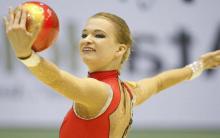
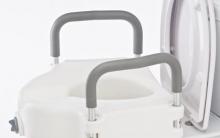
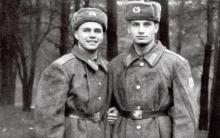
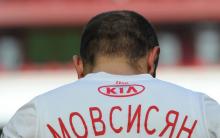
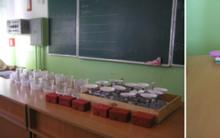
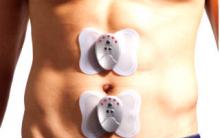




What is aponeurosis and in what cases does this pathology need special attention?
Yuri Borzakovsky. Sports biography. Interview with Yuri Borzakovsky: amateur and professional running Athletics Borzakovsky short biography
Alexander Erokhin: career and achievements
Third trimester: gymnastics for mothers
Drying the body for girls at home Basic principles of drying